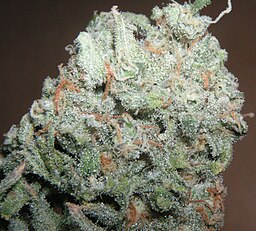So you tried a new dispensary. You controlled yourself and cautiously bought just a gram. Good thing too, because you also discovered over half a gram of seeds in your supposed gram of sweet ambrosia. What is one to do? There are several options, but several things to understand about this event. Here are the most important.
It’s about ownership. In this instance, the consumer physically went back to the dispensary, showed a photo and told them about the seeds. The dispensary owner said they would make things right. Whether that means they’ll pull the lot is unsure. They’ve burned you once. Will they burn you again?
Free Seeds!
Now, one way to look at the seeds in your hand is to wonder how great it would be to grow your own plants at home. “Seeds are very expensive when purchased from seed companies,” you think to yourself. “I’d save hundreds!”
Please, try to control the fiendish laughter.
Actually, the seeds in your hand aren’t worth much at all. They were definitely in the flowers you bought. Those flowers were probably the strain you were told they were. And the seeds might actually grow a female plant – you’ve got a 50% chance on that one.
Another problem with seeds in flowers that aren’t supposed to have seeds is that the pollen donor can’t be positively identified. In the case of an indoor crop, one plant in the grow room may have spontaneously hermaphroditized (a female developing male top flowers that pollinate its own, lower, female flowers) (Punja, et al, 2020), or a male may have simply been overlooked.
Seed companies produce more feminized seed nowadays to get what used to be “clone-only” strains into more gardens. Seeds are very easy to ship, whereas clones can quickly reach only nearby gardens – and under extreme care.
Seed companies prepare very cautiously for breeding plants. Growers must concentrate on production and may not have the additional facilities necessary to confine every pollen source. Growers who breed must accept the risk of stray pollination. It happens. However, seeds should never be sold to the consumer as sinsemilla (seedless) flower.
The grower who claims to have missed the seeds may be a liar – he may not be. Trimmers should have noticed. If your dispensary IS the grower, they’ve put the dollars above their respect for the customer – namely you. Economics forced them to decide it was okay to scam a sale today, and as a result they may not get a sale tomorrow.
A respectable grower would have pulled the lot and headed to the hash bin, where mixed genetics are welcome and blended in. The bottom line is your dispensary operator is either a novice and unwittingly bought this seeded crop, knowingly bought it at a discount, or IS the novice grower who missed them. A seasoned professional would have noticed and should have discounted. You’re in Oklahoma (currently an MMJ state) and start-ups are bound to experience problems, so try to be patient.
What to do with those seeds
Please don’t plant them. And if you do, don’t plant them outdoors near any cannabis farms! Your seeds will probably grow up to be hermaphrodites and will pollinate themselves and any fields surrounding them. If you plant them in your own grow room, watch carefully for males and hermaphrodites when you flower. If you miss one it’ll ruin your whole crop, just like the seeded stuff you’re smoking today. Plus, not only will there be seeds, but your potency will suffer as the flower concentrates photosynthetic energy on seeds instead of resin production (Potter, 2009).
There is a chance that your twelve seeds will sprout, root and grow as many as ten healthy plants to the point that you’re ready to flower. Statistically, you’ll remove five or six in a few days when they show male characteristics in the places you expect. Hermaphrodites will still appear as female as any other at this point. However, as many as several weeks later you could be terribly disappointed to find every last plant has self-pollenated by sprouting male flowers in the midst of the female buds. There could be a completely female plant in your garden, but she’ll be seeded, too – so you may never know.
What about the great genetics that made the bud you’re smoking?
That’s gone. The plant you’re smoking was an F1 hybrid (see line 2 in the figure below). It got all the best traits the breeder intended. Your seed may, and likely will, grow an F2 generation displaying a mix of traits of previous crosses (Clarke, 1981) (see line 3 in the figure below).
Think of your seed as a specific hand in a game of poker. We’ll call it “Aces and Eights” (the dead man’s hand?), but specifically three aces and two eights. If we shuffle two of these hands together and draw a hand of five, there is a very low probability that the same series would emerge. With six aces and four eights in the 10-card deck, we could draw 100 hands and only come up with the correct combination much less than 25% of the time, but we’ll use 25%.
If you’re meticulously watchful when you flower, and if you manage to eliminate all males and hermaphrodites and still have a female, she’ll have a 25% chance of possessing the right genetics. So 50% females and hermaphrodites survive the first thinning. 50% of those are hermaphrodites, so they get hacked, which leaves maybe two plants. Each of these two has a 25% chance of having the right stuff, so put in the time. Spend six weeks biting your nails while it occupies your veg room, then another grueling nine weeks waiting it out and carefully nurturing your “maybe good” bud you got from free seed.
When all is done, dry and cure it and see what you think. It could be good – just don’t expect it to be easy. On the bright side, “Princess” was discovered this very same way when a breeder at an Amsterdam coffee shop found seeds in his measure of “Jack Herer.” “Cinderella” and “C99” have also emerged from that fortuitous find, so there is a chance. Until it’s proven its worth, though, simply calling it a “Gelato Bastard” is enough to warn consumers that it’s a wild card.
If you’ve already decided not to bother, then Good for you! The cannabis world has enough unknowns. Mark that dispensary and grower in your “Burned Me Once” column and move on. I’m sure if they fix their seed problem (and their integrity), economics will improve. The grower and the dispensary operator in Oklahoma are trying to find their place and will eventually get there. Whether you start fresh with another dispensary, or give this one another try, things are bound to improve with a little communication.
***
Reference:
Clarke, R. C. (1981). Marijuana botany: An advanced study: The propagation and breeding of distinctive cannabis. Ronin publishing. Chapter 3: section 2, Breeding. [Buy the book]
Potter, D.J. (2009). The propagation, characterisation and optimisation of cannabis as a phytopharmaceutical. Doctoral Dissertation, King’s College London. [Read the article]
Punja, Z. K., & Holmes, J. E. (2020). Hermaphroditism in Marijuana (Cannabis sativa L.) Inflorescences–Impact on Floral Morphology, Seed Formation, Progeny Sex Ratios, and Genetic Variation. Frontiers in Plant Science, 11, 718. [Read the article]




